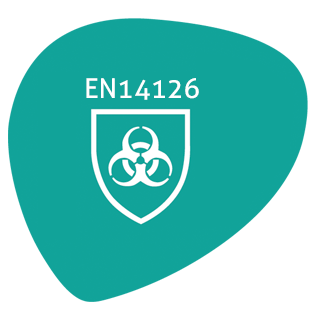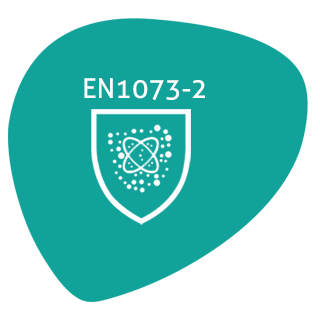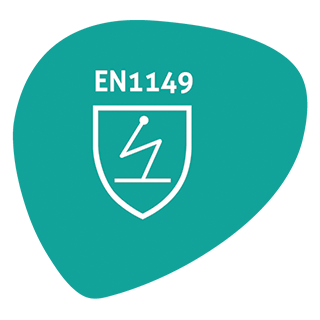Our range of apparel is covered by the PPE Regulation 2016/425. Most of our workwear falls under the minimal risk category, however, certain items must also meet specific industry standards.
Hazard Protective Coveralls, Category III
Our Shield Plus, Shield Advance and Shield Ultimate coveralls.
EN ISO 13688: General Requirements for Protective Clothing
Defines general requirements for ergonomy, product design and comfort, sizing requirements according to wearer height, chest and waist circumference and specific labelling of the garment. We refer to numerical types of protection to define the level of protection of each coverall.
- Type 3: Liquid tight-jet Hazards (EN17491-3)
- Type 4: Liquid spray Hazards (EN17491-4)
- Type 5: Dry particles Hazards (EN13982)
- Type 6: Liquid splashes Hazards (EN13034)
In order to classify coveralls into types, other specific industry standards are required:


EN14126: Protection against Biological Hazards
Specifies the requirement of protective clothing against Infective Agents such as Bird Flu.


EN1073-2: Protection against Radioactive Hazards
Specifies the requirement of protective clothing against Radioactive contaminations.


EN1149: Test method for Anti-static properties
Specifies the requirements and test method for measurement of electrostatic charge decay.
Respirators (half masks)
The range of FFP masks is classified as Category III, complex design and are tested in accordance with the following harmonised standards:
EN149+A1: Protection against hazardous particles for Respiratory masks
Specifies the requirement of Respiratory Protective Face Masks. This standard is divided into 3 categories, which will define the level of filtering protection from each disposable face mask. The level of protection is calculated on the Nominal Protection Factor (NPF), the acceptable level of filtering efficiency based on the amount of hazardous substance in the air. The greater the number, the greater the protection.
FFP1 Mask
Protection from low toxicity levels
4 x NPF
Filtration efficiency of 78%
FFP2 Mask
Protection from medium toxicity levels
12 x NPF
Filtration efficiency of 92%
FFP3 Mask
Protection from high toxicity levels
50 X NPF
Filtration efficiency of 98%
D - Dolomite test. This test exposes the respirator to a concentration of dolomite dust at 400 100 mg/m3 with dust size ranging from 0.7-12 m. All respirators that have passed with additional optional test to EN149 will be marked with the symbol D after the class of respirator. (eg: FFP3D)
Additional usage symbols include:
NR - Non reusable in a single shift
R - Reusable in a single shift
Facemasks
Our medical facemasks DK01 are regulated by the Medical Devices Directive and are tested to and comply with the following European standard:
EN14683: Medical Face Masks Requirements and Test Methods
Defines the Bacterial Filtration Efficiency of the facemasks and divides its tests into four categories:
Part 1:
- Bacterial Filtration Efficiency in vitro (BFE)
- Standards of the filtration of a controlled concentration of Staphylococcus aureas.
- Results: BFE of =95% = Type I BFE of =98% = Type II
Part 2:
- Breathing Resistance (Delta P)
- Testing of the air flow pressure passing through the mask.
- Results: Type I & II (non splash resistant) = <29.4 KPa
- Type IIR (splash resistant) = <49.0 KPa
Part 3:
- Splash Resistance
- Testing of a determined quantity of artificial blood sprayed on the mask.
- Results: Type I & II not applicable
- Type IIR minimum 120 mmHg
Part 4:
- Microbial cleanliness
- The bioburden of the medical mask shall be <30 cfu/g
Need More Advice on Standards and Compliance?
